Professor Jon Abbatt is one of a Canada-wide team of researchers which has reached the mid-point on an important five-year project: researching impacts to the atmosphere caused by wildfires.

The Biomass Burning in Canada Project (BBCan) brings together chemists from four Canadian universities. The U of T group includes Professor Abbatt, Professor Arthur Chan of Chemical Engineering and Applied Chemistry, and Professors Debra Wunch and Dylan Jones of Physics. Additional researchers on BBCan include faculty from the University of Alberta, Dalhousie University and Université de Montréal. Federal agencies Environment and Climate Change Canada, Natural Resources Canada, and National Research Council are also part of the research, working together to better understand the atmospheric impacts of biomass burning.
The project looks at emissions from wildfires with the goal of learning about the climate and air quality effects, including the relationship of fires to climate change. Besides studying what is being burned, it zooms in to examine smoke penetration into wildfire-adjacent homes. In particular, Department of Chemistry graduate student Kristen Yeh is asking how much smoke Canadians are inhaling, even when they stay indoors, during a wildfire event.
“In the boreal forest, what burns is less often trees than soil: peat, for example, and mulch in the understory. In other words, what ends up in the atmosphere is what’s in the ground,” Abbatt explained.
Learning how the forest floor ends up in our atmosphere and homes involves burning material in a controlled setting. With help from scientists at Natural Resources Canada, a BBCan team assembled representative samples of the northern boreal forests, containing biomass like wood, moss, leaves, and peat. These were incinerated in a facility in Alberta, where the airborne solid and liquid particulates and the gases created by combustion were captured and studied.
Abbatt says that while the BBCan project does perform some during-the-fact atmospheric sampling in areas prone to wildfires, they must also rely on using computational models to assess how well existing theories predict the atmospheric effects of burns, especially in Canada's northern boreal forest.
Once a fire is loose, of course, it may not confine itself to merely burning forest biomass. One of Abbatt’s U of T postdoctoral fellows, Hongru Shen (co-supervised by Professor Arthur Chan) incinerated a variety of plastics to research what else ends up in the atmosphere when these kinds of consumer waste materials are in the picture. “Our initial scope was forest material, but we expanded the project to plastics, commercial materials that burn at the urban-wildland interface,” Abbatt said.
“Many of the fires we study occur in northern boreal forests and occur at some distance from human settlements,” Abbatt says. “Where we live, we have a tendency to suppress fire.”
When suppression proves ineffective, fires like the recent 2024 wildfire near Jasper, Alberta can be the unhappy result. These add smoke from burnt human-made objects to the atmosphere along with organic material from the boreal forest ecosystem.
With such concerns in mind, Professor Chan investigated indoor contamination in 2016 in Fort MacMurray, testing the interiors of over 100 homes after the wildfire there.
Another BBCan dimensions is determining how much black carbon smoke is generated by wildfires. Black carbon is primarily released by high-temperature combustion, and can have significant impacts on climate and human health. Determining whether the sources are from forest fires or from industrial- and transportation-related sources is important.
Having a five-year scope to study the wide ranging atmospheric effects of wildfires, at a time when they are becoming more frequent and severe, is key to developing understanding of their impacts. BBCan plays an important role in addressing scientific uncertainties that might otherwise limit Canada’s approach to developing policies that link net-zero emission goals to forest and air quality management strategies. It is an important player in the country’s work to explore ways to mitigate climate change with nature-based solutions.
“Having sufficient funding to involve many scientists from across Canada for five years of research, with important government partners closely involved," Abbatt said, "is crucial to building our understanding of how we and the climate are impacted when our forests burn."


